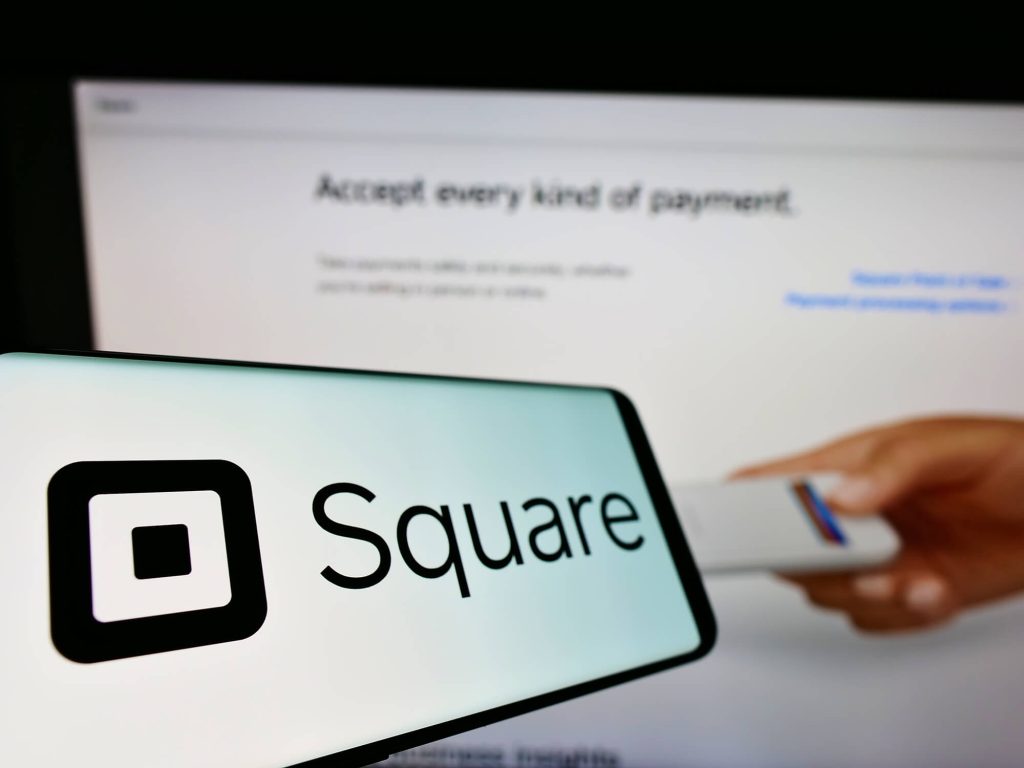In the ever-evolving world of business, it is crucial for entrepreneurs and small business owners to stay informed about the costs associated with payment processing. One popular option that has gained significant traction in recent years is Square, a payment processing platform that offers a range of services to help businesses accept payments seamlessly. However, like any other payment processor, Square charges fees for its services. In this article, we will delve into the world of Square fees and explore how much it will cost businesses in 2024.
What are Square Fees and How Do They Work?
Square fees are the charges imposed by Square for processing payments and providing various services to businesses. When a customer makes a payment using a credit or debit card, Square deducts a percentage of the transaction amount as a fee. This fee covers the cost of processing the payment, ensuring the security of the transaction, and providing additional features and services to businesses.
How Square Fees are Calculated: A Breakdown of the Cost Structure
To comprehend Square fees fully, it is crucial to understand how they are calculated. Square primarily charges two types of fees: transaction fees and additional fees. Transaction fees are the charges imposed on each transaction processed through Square, while additional fees encompass various other charges that businesses may incur.
Transaction fees are typically a percentage of the transaction amount, along with a fixed fee per transaction. For example, Square may charge 2.6% + $0.10 per transaction. This means that for a $100 transaction, the fee would be $2.60 + $0.10, totaling $2.70. The percentage fee varies depending on the type of transaction, such as in-person, online, or keyed-in transactions.
Additional fees may include charges for specific services or features offered by Square. For instance, businesses may incur fees for using Square’s invoicing feature, accessing advanced analytics, or integrating with third-party applications. It is crucial for businesses to carefully review these additional fees to avoid any unexpected costs.
Factors Affecting Square Fees in 2024: Exploring the Variables
Several factors can influence the Square fees businesses will incur in 2024. One significant factor is the volume of transactions processed through Square. Generally, Square offers lower transaction fees for businesses with higher transaction volumes. Therefore, businesses that process a large number of payments can negotiate lower fees with Square.
Another factor that can affect Square fees is the type of business and industry. Certain industries, such as high-risk businesses or those with a higher likelihood of chargebacks, may be subject to higher fees due to the increased risk associated with their operations.
Furthermore, the country in which a business operates can also impact Square fees. Square charges different fees for businesses operating in different countries, taking into account factors such as local regulations and currency conversion.
Square Pricing Plans in 2024: Exploring the Options for Businesses

Square offers different pricing plans to cater to the diverse needs of businesses. In 2024, businesses can choose from several pricing plans, each tailored to specific requirements. The most common pricing plans offered by Square include the Free Plan, the Essential Plan, and the Plus Plan.
The Free Plan is an excellent option for small businesses or those just starting. It charges no monthly fee and offers basic features such as in-person payments, online payments, and mobile payments. However, businesses should note that transaction fees still apply.
The Essential Plan is designed for growing businesses and charges a monthly fee in addition to transaction fees. This plan offers additional features such as inventory management, employee management, and advanced reporting. The monthly fee varies depending on the business’s size and needs.
The Plus Plan is Square’s most comprehensive plan, offering advanced features and services. It includes all the features of the Essential Plan, along with additional benefits like loyalty programs, email marketing, and appointment scheduling. The Plus Plan charges a higher monthly fee but may be worth it for businesses that require these advanced features.
Comparing Square Fees with Competitors: Which Payment Processor is the Best?
When considering payment processing options, it is essential to compare Square fees with those of its competitors to determine which option is the most cost-effective. While Square offers a range of features and services, it may not always be the most affordable option for every business.
One of Square’s main competitors is PayPal, which also provides payment processing services. PayPal charges a similar transaction fee of 2.9% + $0.30 for online payments, but its in-person transaction fee is slightly higher at 2.7% + $0.30. However, PayPal offers additional services such as international payments and recurring billing, which may be beneficial for businesses with specific needs.
Another competitor is Stripe, a payment processing platform that charges a transaction fee of 2.9% + $0.30 for online payments and 2.7% + $0.05 for in-person payments. Stripe is known for its developer-friendly features and robust API, making it a popular choice for businesses with more complex payment processing requirements.
Ultimately, the choice between Square and its competitors depends on the specific needs and priorities of each business. It is crucial to carefully evaluate the features, fees, and additional services offered by each provider to make an informed decision.
Hidden Costs and Additional Fees: Unveiling the Fine Print
While Square’s pricing plans and fee structures are transparent, it is essential for businesses to be aware of any hidden costs or additional fees that may arise. These hidden costs can significantly impact a business’s bottom line if not carefully considered.
One potential hidden cost is chargeback fees. A chargeback occurs when a customer disputes a transaction and requests a refund. Square may charge a fee for each chargeback, which can range from $10 to $45 per occurrence. Businesses should be aware of their chargeback rates and take necessary measures to minimize them.
Another potential additional fee is for instant transfers. Square offers the option for businesses to receive their funds instantly instead of waiting for the standard deposit time. However, this service comes with an additional fee, typically a percentage of the transfer amount. Businesses should evaluate whether the convenience of instant transfers justifies the extra cost.
Square Fee Trends in 2024: Analyzing the Changes Over Time
As the payment processing industry evolves, Square fees may experience changes and trends in 2024. It is crucial for businesses to stay informed about these trends to adapt their strategies accordingly.
One potential trend is a decrease in transaction fees. With increasing competition in the payment processing market, companies may lower their fees to attract more customers. This could benefit businesses by reducing their overall transaction costs.
Another trend to watch for is the introduction of new pricing plans or features. Payment processors may introduce innovative plans or services to cater to specific industries or business types. Businesses should stay updated on these developments to take advantage of any cost-saving opportunities.
Additionally, advancements in technology may lead to more efficient payment processing systems, potentially reducing costs for businesses. For example, the adoption of blockchain technology or decentralized finance (DeFi) may disrupt traditional payment processors and offer more cost-effective alternatives.
Tips to Minimize Square Fees: Strategies for Cost Optimization
While Square fees are an inevitable part of accepting electronic payments, there are strategies businesses can employ to minimize these costs and optimize their expenses. Here are some tips to consider:
- Negotiate fees: For businesses with high transaction volumes, it may be possible to negotiate lower fees with Square. Contacting Square’s sales team and discussing the business’s needs and volume can potentially lead to a customized pricing plan.
- Optimize transaction types: Square charges different fees for in-person, online, and keyed-in transactions. By encouraging customers to use lower-cost transaction methods, such as in-person payments, businesses can reduce their overall fees.
- Review pricing plans regularly: As a business grows or its needs change, it is essential to review the pricing plan with Square. Upgrading or downgrading to a different plan can help align the fees with the business’s current requirements.
- Minimize chargebacks: Chargebacks not only result in lost revenue but also incur additional fees. Implementing robust customer service practices, clear refund policies, and fraud prevention measures can help minimize chargebacks and associated costs.
- Leverage integrated solutions: Square offers integrations with various third-party applications and services. By leveraging these integrations, businesses can streamline their operations, potentially reducing costs and improving efficiency.
Frequently Asked Questions (FAQs) about Square Fees in 2024
Q.1: Are there any hidden fees with Square?
Square fees are transparent, but businesses should be aware of potential additional fees such as chargeback fees or fees for instant transfers. Reviewing Square’s terms and conditions and understanding the fine print will help businesses avoid any unexpected costs.
Q.2: Can I negotiate fees with Square?
For businesses with high transaction volumes, it may be possible to negotiate lower fees with Square. Contacting Square’s sales team and discussing the business’s needs and volume can potentially lead to a customized pricing plan.
Q.3: Are there any alternatives to Square with lower fees?
Several payment processors offer competitive pricing plans and fee structures. PayPal and Stripe are popular alternatives to Square, each with its own fee structure. It is essential for businesses to compare the fees, features, and services offered by different payment processors to determine the best fit.
Q.4: How can I minimize chargebacks and associated fees?
Implementing robust customer service practices, clear refund policies, and fraud prevention measures can help minimize chargebacks and associated costs. Regularly reviewing and addressing customer feedback can also help identify and resolve potential issues before they escalate to chargebacks.
Conclusion
In conclusion, Square fees play a crucial role in determining the overall cost of using the platform for businesses. By understanding Square’s pricing structure, transaction fees, hardware costs, software costs, subscription plans, additional services, and even comparing it with its competitors, businesses can make informed decisions for Square usage in 2024. Square offers a transparent and competitive pricing model, ensuring businesses can accept payments seamlessly without incurring exorbitant fees.
By implementing fee optimization strategies and considering the specific needs of the business, businesses can minimize costs and maximize the value they derive from Square. As technology continues to evolve, Square is expected to adapt and offer even more cost-effective solutions for businesses, making it an attractive option for payment processing in 2024 and beyond.
